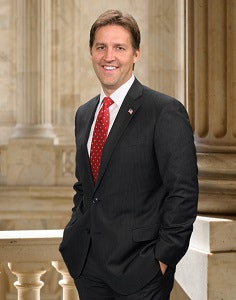WASHINGTON — Thousands of legislators, state superintendents, policymakers and education leaders convened this week for Excellence in Education’s (ExcelinEd) 11th annual National Summit on Education Reform to share innovative strategies, emerging trends and successful policies that are transforming the realm of higher education for the 21st century.
Keynotes and panel discussions about the distinction between education versus schooling, promoting social emotional learning and academic development, enhancing career and technical education and addressing gaps in teaching capacity were among the timely discussions during the first day of the two-day summit.
“We’ve inherited a system that was created in response to” the needs of the industrial era of the 20th century, U.S. Senator Ben Sasse of Nebraska said in opening remarks. He added that education reformers of the early 1900s would most likely propose alternative solutions to how we approach education in the age of automation and technology if they were alive today.
Offering a historical overview of the nation’s education system, Sasse also noted that individuals looking to transform education should not view education and schooling as synonymous.
“Education is a goal,” he said. “Schooling is one of many means to an end. … We need to be constantly returning to and reorienting ourselves about what it means to educate.”
 Senator Ben Sasse
Senator Ben SasseThe current schooling approach of lecturing to students works for some, but not for others, Sasse said, adding that “schools are not assembly lines. They’re gardens” that should be nurturing and cultivating empathetic and life-long learners.
Developing students as life-long learners was a theme of the strategy session “Fast Tracks to the Economy’s Most In-Demand Jobs: Strengthening State Career and Technical Education Programs.”
At the state level, Dr. Danielle Mezera said that supporting policymakers around developing or improving career and technical education (CTE) efforts is an essential component to preparing students to have the academic, technical and employable skills they will need for the workforce.
Using a “CTE Playbook Series,” state leaders can audit existing CTE programs and use the data gathered to implement a strategic plan that aligns the state’s CTE programs with education, economic and workforce priorities, Mezera said.
Moreover, buy-in from the local or regional business community is key to aligning education curriculum to workforce needs, said Romanita Matta-Barrera, executive director of SA Works, a workforce organization in San Antonio that promotes economic mobility. The organization hosts job shadow days and provides experiential learning opportunities, including teacher externships.
“Where the rubber meets the road is the school level,” said Jason Gaulden, vice president of partnerships at America Succeeds.
Dr. Jeffrey Menzer, assistant superintendent of the Colonial School District in Pennsylvania, shared six practices for enhancing CTE programming in schools: nurture early adopters and encourage experimentation; say “yes” more than “no”; build a “bigger box” for students and help them find the relevance in their learning; provide access and opportunity by growing students’ leadership mindset, showcasing their work, and engaging the community; be patient, yet persistent; and tell your story using data and numbers.
“When you’re building these programs out, integrate as much as you can,” Menzer added, highlighting how his district blended culinary courses with chemistry, for instance. “We don’t talk about it as CTE, it’s just what we do.”
In another session on integrating social emotional learning and academic development (SEAD) into learning experiences, Danielle Gonzales, managing director for the Education and Society Program at the Aspen Institute, shared that the inter- and intrapersonal skills in this framework — how we apply knowledge, communicate, solve problems, regulate emotions or manage time — are among those that we continue to learn over the course of our lifetime.
“It’s also about the context in which we live,” Gonzales added. “We know that our sense of belonging in a place really determines our level of engagement” and learning.
Dr. Steve Canavero, Nevada’s superintendent of public instruction, says it is the state’s role to create enabling conditions and remove barriers to integrating SEAD into the education system. This begins with setting a clear vision for student success that outlines outcomes tied to academics, as well as students’ well-being and safety, Canavero said.
Beyond setting clear a vision, there is a “real need” for structural capacity, adult capacity (Are adults in a place themselves to model SEAD competencies?), and resource capacity, which doesn’t always mean new money, he added.
“There are a lot of entry points into the work,” Canavero said. “The coherence of this work is the real work.”
States and school systems will be able to learn more about building SEAD into learning experiences when the Aspen Institute National Commission on Social, Emotional and Academic Development releases their report on the topic in January.
ExcelinEd founder and chairman former Florida Gov. Jeb Bush, in a video, challenged those working in the education reform space to continue sharing and gathering ideas and practices that are “innovative and adaptable enough to meet the needs of our students.”
“I hope you embrace it with a rubber-meets-the road-urgency” that is rare in policy, he added. “Go big, be bold and be impatient.”
Tiffany Pennamon can be reached at [email protected]. You can follow her on Twitter @tiffanypennamon.





















